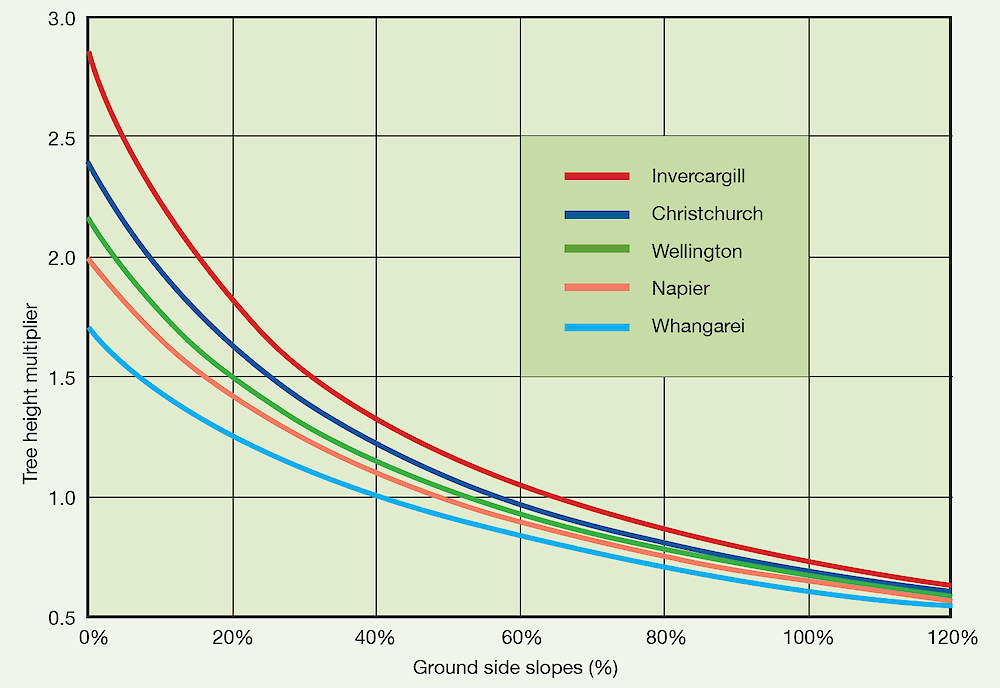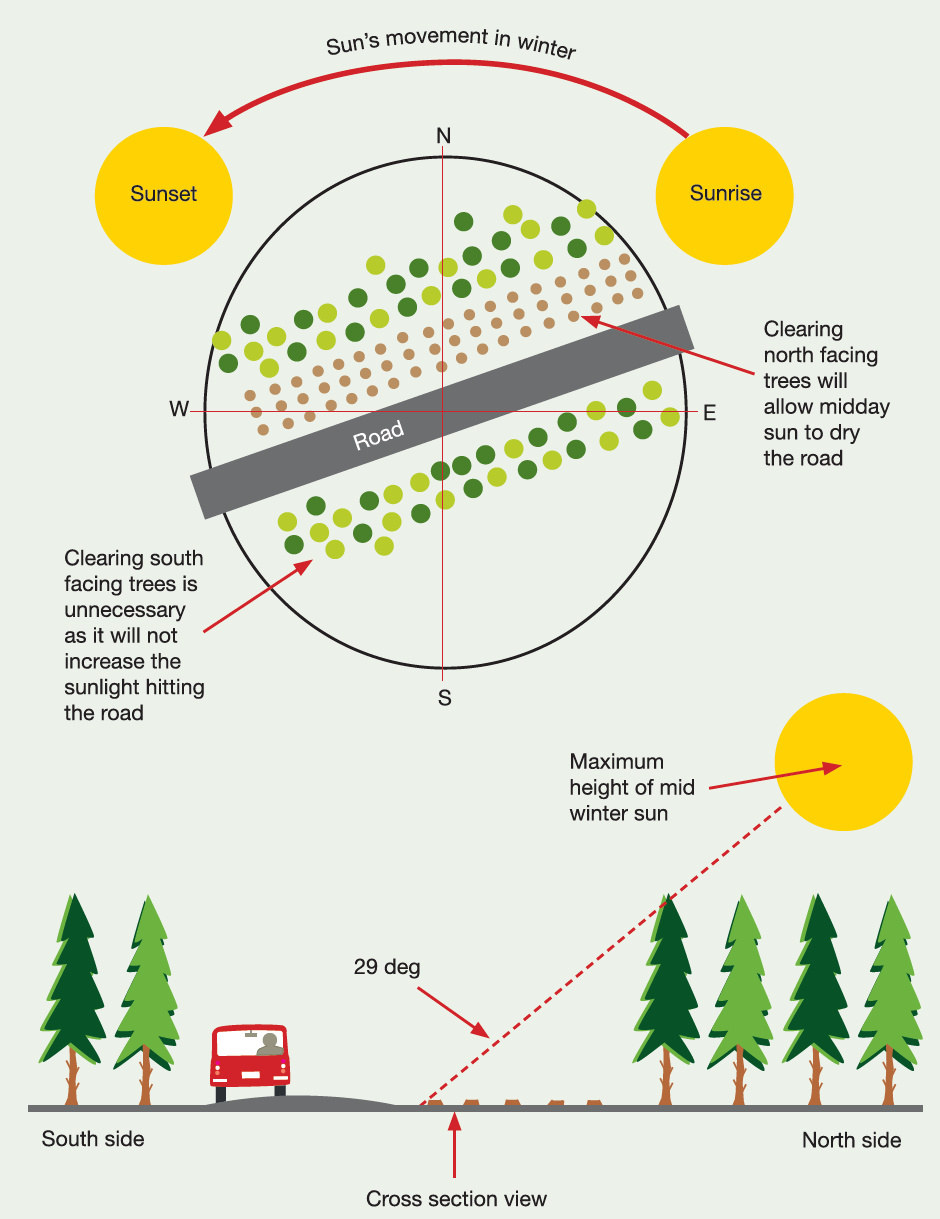Daylighting is the process of removing trees on either side of the road to allow sunlight onto the road. It may occur as part of the roadline salvage, where additional trees are extracted beyond what is required for construction, or on existing roads prior to harvest. Daylighting assists drying which will result in a firmer road and reduce rutting.
The daylight clearing width is very dependent on the position or aspect of the road. Daylighting is not required for roads constructed on true bearings clockwise between 305⁰ and 055⁰ because the sun will shine directly down the roadway, even on the shortest day of the year. Furthermore, there is little point in clearing trees 20 m either side of the road if the sun will not reach the road in the middle of winter. It may be more beneficial to remove the north-facing trees and leave the south-facing trees standing. The mid-winter sun is then more likely to dry the road. Roads on steep terrain should, wherever possible, be constructed on north-facing slopes only, as the sun will generally not reach the road on a south facing slope.
The daylighting clearing width should be kept as small as possible, to ensure that the maximum productive area remains and, in some locations, to reduce the potential for windthrow. The figure below can be used to estimate the amount of clearing width required, assuming that at least one hour of sunlight must reach the road on the shortest day of the year. Note that the required clearance width is dependent on latitude and side slope.
Daylighting clearing width example Daylighting clearing width required for one hour of daylight to reach the road on the shortest day of the year
Daylighting clearing width required for one hour of daylight to reach the road on the shortest day of the year
Daylighting considerations Position of mid-winter sun and the effect of cutting north-facing trees for daylighting
Position of mid-winter sun and the effect of cutting north-facing trees for daylighting